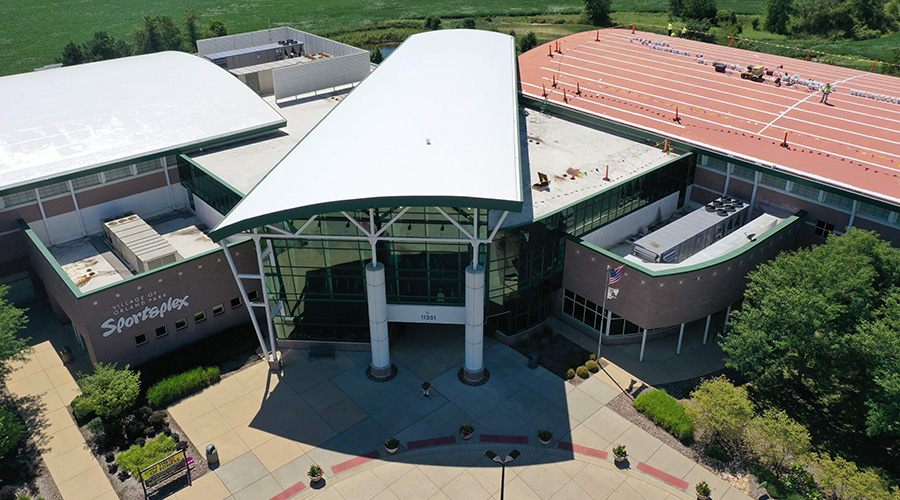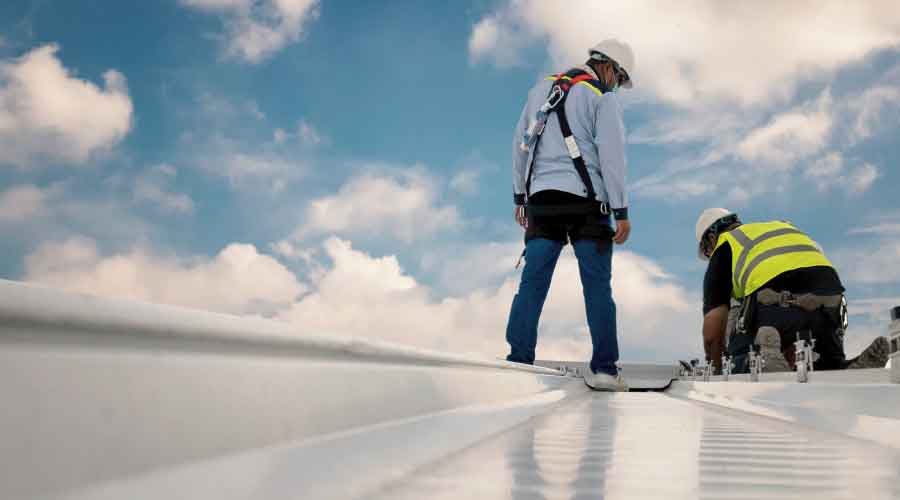Roof Retrofits: Strategies for Membrane, Base Flashing Installation
Rolls from most BUR membrane manufacturers have chalk lines printed on the felt. The inspector should check these factory-installed chalk lines during installation to make sure the installer does not sway outside the appropriate lines during installation. Doing so might result in a multi-ply membrane installation that does not meet specification requirements for the required number of plies.
A good practice is to review the leading edge of the felt roll as installers roll it into the hot bitumen. Installers typically can achieve proper bitumen interply mopping weights by producing a pool of hot bitumen at the leading edge of the felt roll. If the inspector does not see a pool of bitumen, chances are good installers are not applying enough bitumen during interply mopping, which can result in a felt-on-felt condition and blisters in the membrane interply, as well as eventual membrane failure.
Fish mouths at the end of the membrane roll result from not applying enough bitumen at the ends of the felt roll. The inspector should mark these locations for repair, cut the cupped felt without damaging the underplies of roofing material, and reset the felt ply in mastic, allowing it to lay flat. Workers should install a one-ply cover felt over the repair area, extending at least 12 inches on each side of the repair.
Inspectors should be aware of workers walking on recently installed membranes, which can damage the membrane and displace the interply bitumen, causing blisters to form where boot prints leave a void. To avoid such problems, workers generally apply river-washed gravel in a flood coat of bitumen over BUR membranes or install a modified granulated cap sheet.
Base Flashing
Inspectors should monitor the installation of base flashings so workers do not stretch the membrane into place. Workers should install base-flashing sheets that are 10-12-feet long and press them by hand into the hot-bitumen application, making sure to achieve full adhesion to the substrate.
They also should secure base flashings along the top edge using nails through 1-inch-diameter discs or a continuous term bar fastened to the substrate at an 8-inch outside circumference with a sheet-metal counterflashing cover.
Paying close attention to these essential issues is the first step to the successful performance of BUR systems. Preventing problems during installation can ensure these systems achieve their intended performance lives.
Tom R. Kaiser, RRO, is senior project manager with StructureTec Corp., a building envelope and roof consulting firm in Kalamazoo, Mich.
Related Topics:















